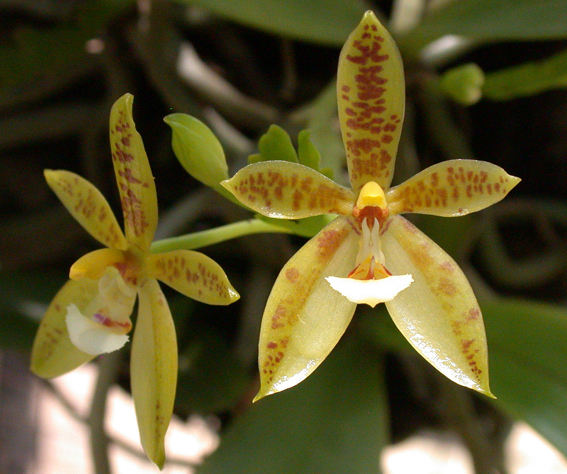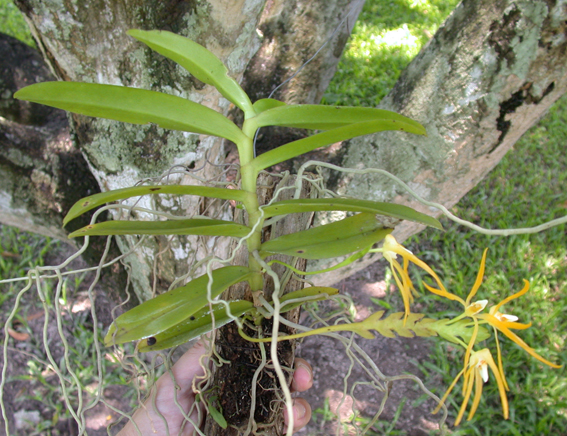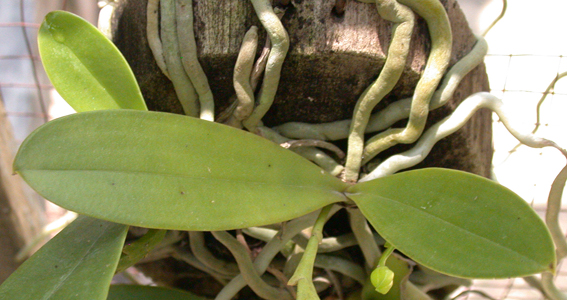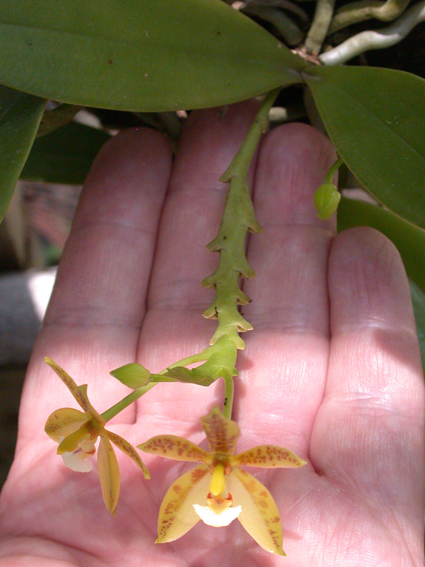The scolopender orchid and the antler orchid
The main stalk of the inflorescence (peduncle) of the Thai scolopender orchid (Thrixspermum centipeda, Orchidaceae) indeed looks like a scolopender or giant centipede. The peduncle also resembles that of another Thai orchid which grows in similar habitats: the antler orchid (Phalaenopsis cornu-cervi).
We have seen them growing wild along streams in otherwise dry dipterocarp forests in northern Thailand. The two species grow and bloom side by side in the Orchid Ark nursery at Dokmai Garden in Chiang Mai. When comparing our field observations with the literature it seems the scolopender orchid has a broader range of climate tolerance, being found in dry Indian savannahs and wet rainforests of Borneo. However, local genetic adaptations may be important, so that a strain from a rain forest climate may succumb in a savannah habitat, although the two strains belong to the same species. In any conservation effort it is therefore essential to work with local strains, not just buy any clone of the species and hope for the best.
 The petals and sepals of the scolopender orchid are long….
The petals and sepals of the scolopender orchid are long….
 …while the antler orchid sticks to a more classic design.
…while the antler orchid sticks to a more classic design.
 The narrow leaves of the scolopender orchid are arranged in levels, a typical feature of many vandoid orchids.
The narrow leaves of the scolopender orchid are arranged in levels, a typical feature of many vandoid orchids.
 The broad leaves of the antler orchid are arranged in a more rosette-like manner.
The broad leaves of the antler orchid are arranged in a more rosette-like manner.
 The antler orchid has a main flowering stem similar to the scolopender orchid, or that of a deer antler.
The antler orchid has a main flowering stem similar to the scolopender orchid, or that of a deer antler.
Why not call the ‘scolopender orchid’ the ‘centipede orchid’? That vernacular name is already used for Trichoglottis philippinensis whose leaves look like centipede feet. In any case, the real name of an orchid is its scientific name, that is international and it is precise, while vernacular names are not so important, just useful when communicating with somebody with a general interest. You can pick any vernacular name you want, although a name standard may help communication.
The genus Thrixspermum (meaning hairy seed) was coined by the Portuguese João de Loureiro in 1790. The genus Phalaenopsis (meaning ‘moth-resembling’) was coined by the German-Dutch botanist Carl Ludwig Blume in 1825. He worked at the botanic garden in Bogor, Java between 1823 and 1826.
Text & Photo: Eric Danell


